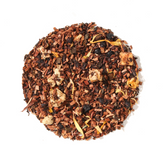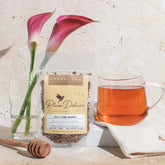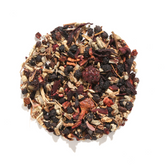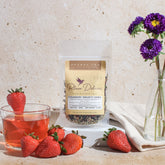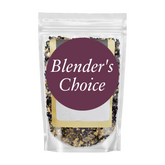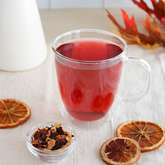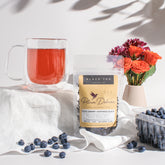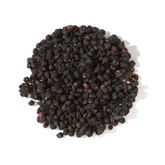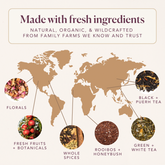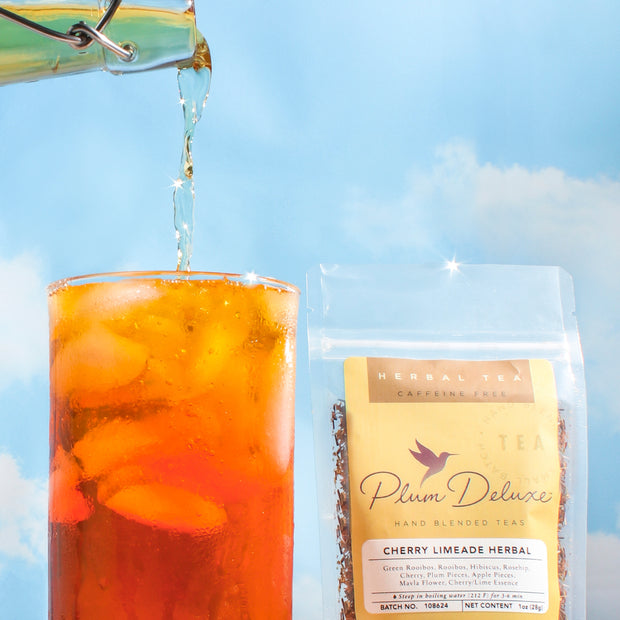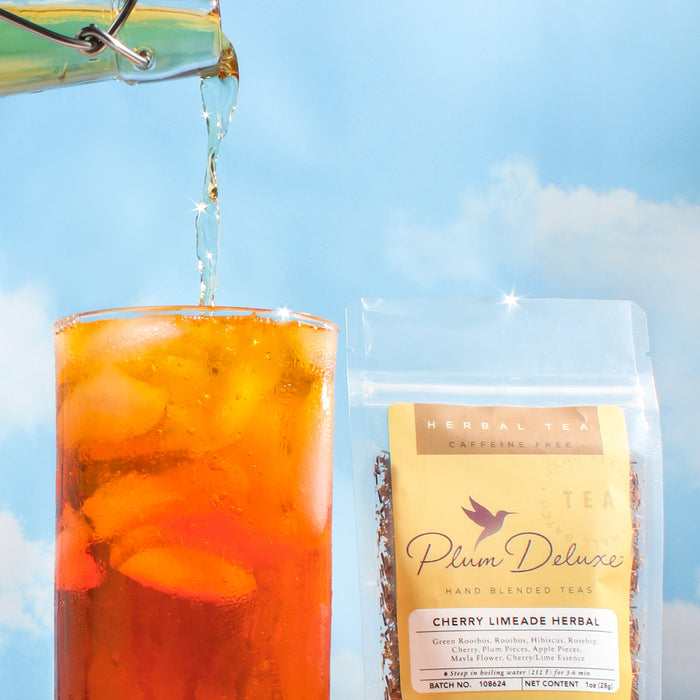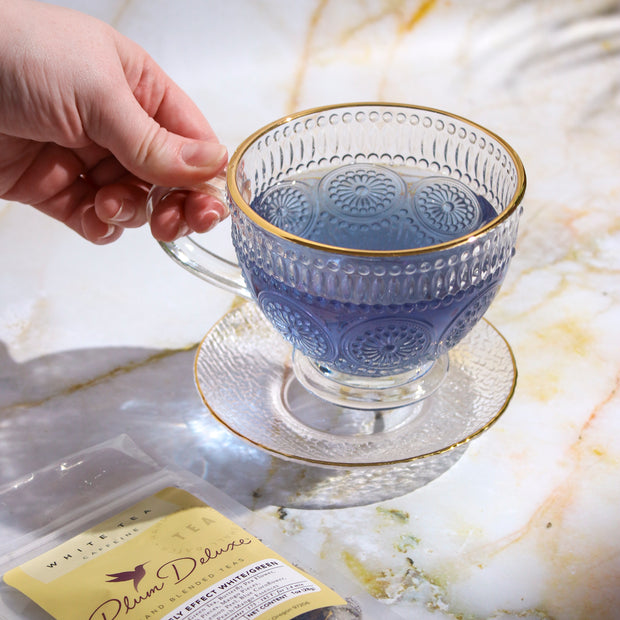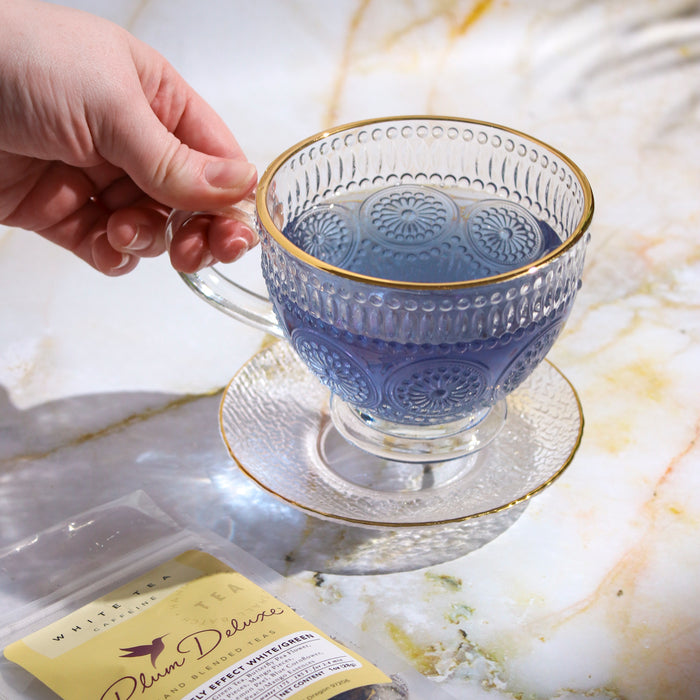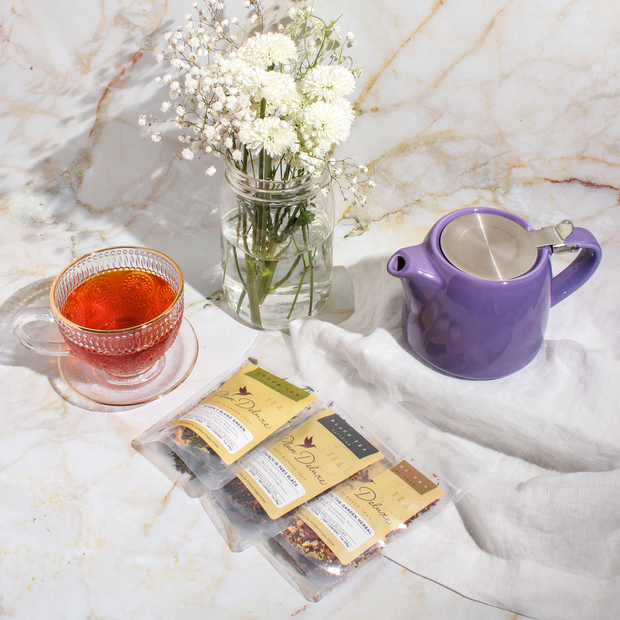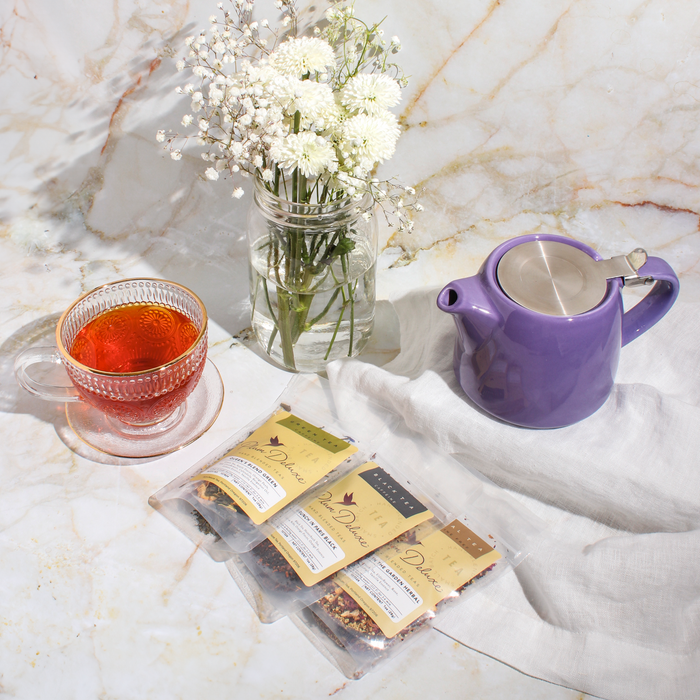Are you an oolong tea extraordinaire? Are you new to the world of these enticing blends, or have you tried a cup or two and wanted to explore more? No matter where you have found yourself on this excursion, you’ve landed in the right spot when exploring the infamous question:
“What’s the best oolong tea?”
We’re going to be covering the ins and outs of oolong tea and familiarizing you with it. We’ll describe its similarities and differences to black tea, its benefits, its caffeine content, and what flavor profile you can expect. Then we’ll wrap up with the bountiful treasure of a list of Plum Deluxe’s amazing oolong teas for you to steep, sip, and enjoy!


Is Oolong Tea Black Tea?
In short—no, oolong tea is not black tea.
Let me further explain why:
Both black tea and oolong tea are indeed true teas. What I mean by that is they are both made from the leaves of the Camellia sinensis plant.
Fun fact: There are only five true teas: white, Puerh tea, green tea, black tea, and oolong tea
Both black tea and oolong tea are oxidized teas. Wondering what oxidation means? Let me explain a little more in-depth.
Oxidation happens when the tea leaves are exposed to oxygen. Much like picking a leaf from a tree, you’re removing its source of nutrients to keep it alive, and so it starts decaying. There are four factors that create oxidation and that can accelerate its process: oxygen, heat, light, moisture.
When tea masters are working with tea leaves, they work the magic of oxidizing some tea leaves and not oxidizing others. For example, white teas are not oxidized at all and are often picked still in the form of buds and quickly tucked away to keep from oxidizing. They want to be kept pure.
The leaves for green, black, and oolong teas are going to be sent through the process of using oxygen, heat, light, and moisture to obtain the perfectly crafted tea leaves we adore—mastered to perfection!
Green tea is lightly oxidized, whereas black tea is heavily oxidized. Sitting right in the middle is a beautiful category of semi-oxidized tea called oolong tea.
If you’re anything like me, when I first started off in the world of teas, I avoided oolong teas, and some black, for the simple reason that “black teas” held a negative connotation of being too bold and too robust. As far as oolong teas went…I had no clue what it was and just looking at it had me assuming, “Well, it looks an awful lot like black tea, so, thanks but no thanks.” How wrong I was!
I love oolong tea! And for good reason!
It’s the perfect balance of everything I love about green tea and black tea—it’s divine!

Oolong Tea Benefits
The list is a result of my quest for the best oolong tea and discovering its benefits. I’m going to start off by giving you the treasure right upfront, and then we’ll dive into the why’s and how’s of it all. Sound good?
Oolong tea has been shown to possess a variety of antioxidant activities by reducing oxidative stress, anti-diabetic, anti-cancer, anti-obesity, heart disease, hypertension, anti-allergic effect, and antiseptic.
Wondering how scientists ended up here?
Researchers began by investigating theaflavins, which are formed during the fermentation process, or oxidation. As we know, this is what gives the tea leaves the color and taste we all love. They discovered that through the oxidation process, theasinesins were detected. It took oxidizing and heating the leaves to a particular temperature to achieve the chemical reaction, thus creating this compound.
This compound is what holds all these glorious treasures of health benefits like antioxidative, anti-inflammatory, cancer prevention, and vasodilating effects found in the leaves of oolong tea!
According to epidemiological studies, tea consumption is positively associated with a reduced risk of chronic diseases, causing 60% of global deaths such as coronary heart disease, stroke, and cancers.
Polyphenols are generally attributed to their potent antioxidant property. Tea polyphenols act as free radical scavengers and may remove superoxide, peroxyl, and hydroxyl radicals. The antibacterial properties of oolong tea are small but mighty, fighting on your side with every sip!

Oolong Tea: Caffeine Content
The caffeine content in teas is very much related to the oxidation process. We’ve discussed this process pretty in-depth above. Another factor to be considered is the temperature of your water when steeping your oolong tea, as well as if your first-time steeping, or re-steeping your leaves.
Remember, oolong tea leaves can be brewed multiple times!
In conjunction with the oxidation process, green teas, which don’t oxidize for long, have lower caffeine content. Black teas oxidize for a much longer period and have a bolder flavor and higher caffeine content. With oolong tea sitting in the middle as a semi-oxidized tea, it’s a “middle-of-the-road” cuppa, with 10-102 mg per eight ounces. A cup of black coffee has 90-110 mg per eight ounces.
The reason there’s such a variable here is that there are multiple factors to take into consideration. If you’re someone who likes to use boiling water with oolong tea, the tip to remember is that you will extract twice as much caffeine from your leaves versus someone who uses warm water. Couple that with how long you choose to steep (five minutes?), and you can end up on the high end of the caffeine level pretty quickly.
On the other end of the spectrum, say you had your water a little cooler, around 100°F, and steeped for up to three minutes, or maybe you steeped your leaves in boiling water for three minutes, but it was your second or third brew with the same leaves…these will all be factors that will play a part in where your exact caffeine level will come out.
Check out our article on caffeine content in tea if you’re looking for a general overview of different tea types and their caffeine content. I’d recommend hopping on over for an overview when you’re ready to dive a little deeper. It’s a handy little fact sheet!
What Does Oolong Tea Taste Like?
Bold and bright to delicate and light—there’s no shortage of intensity, depth, charm, and charisma with the variety of the best oolong teas.
Some oolongs are lightly oxidized and tend to be more like green tea—light with hints of floral. Others are more heavily oxidized and carry richer notes and a malty aroma that is reminiscent of black teas. It is all dependent on the tea maker and what they are looking to create.
I think that this is the greatest distinguishing aspect of this tea—its versatility!
We have a fabulous article: What Does Oolong Tea Taste Like by Jesse McDonald, where she answers this question ever so eloquently. I encourage you to take a peek!

Ooo-for-the-Long List of Choices
I think the title kind of covered this one…but there are so many amazing choices, and we’ll cover just a few here. You’ll have to head over to our Oolong Teas page to get the scoop on them all!
First up is the known, but because we can’t name names…Chocolate Mint ‘Like-The-Cookie’ oolong tea. With real cocoa nibs, peppermint, roasted coconut chips, and vanilla and mint essence it just draws you in and envelopes every sense! It’s my guilty pleasure tea—every time!
Our Toasted Nut Brulee oolong tea is an intriguing swirl of hazelnut, chestnut, almond, and walnut—with a splash of toasted vanilla. Think of it as a caramel nut tea…and it serves up well with creamer, too if you so choose.
One of my favorite oolong teas is our Peaches n’ Cream oolong tea. The base is a blend of both oolong and black teas, paired with peach and fruit pieces. Just like the Toasted Nut Brulee oolong tea, it’s another oolong that pairs well with milk. I am also a lover of adding a sprinkling of our Vanilla Sugar Dust to it, too. It just wraps it up with a pretty bow on top!
Before I sign off, I thought I’d leave you with one other little “how-to” and that’s on How to Brew Oolong Tea by Mary Hadzimichalis. This is a great place to go once you have all your oolong teas in hand, so you can get only the best cup of tea with each brew! Enjoy your treasures!
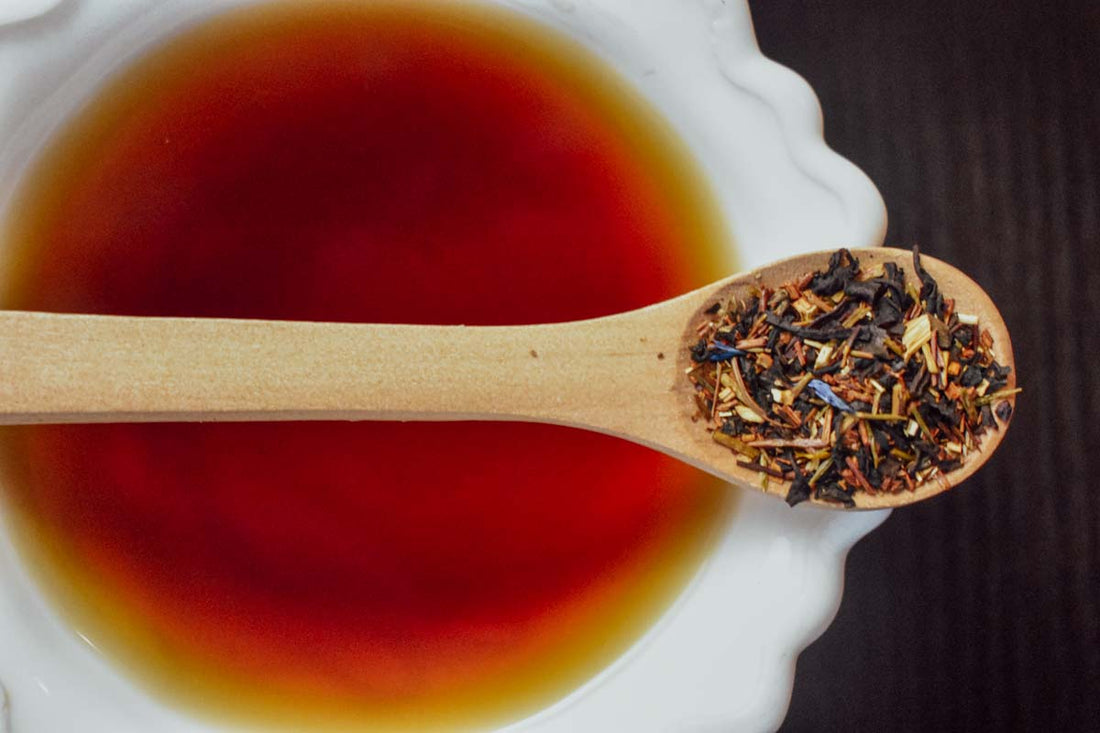
![Summer Iced Tea Variety Pack [6-Pack Variety of Flavors]](http://www.plumdeluxe.com/cdn/shop/files/summervarietypack.png?v=1713833466&width=165)


